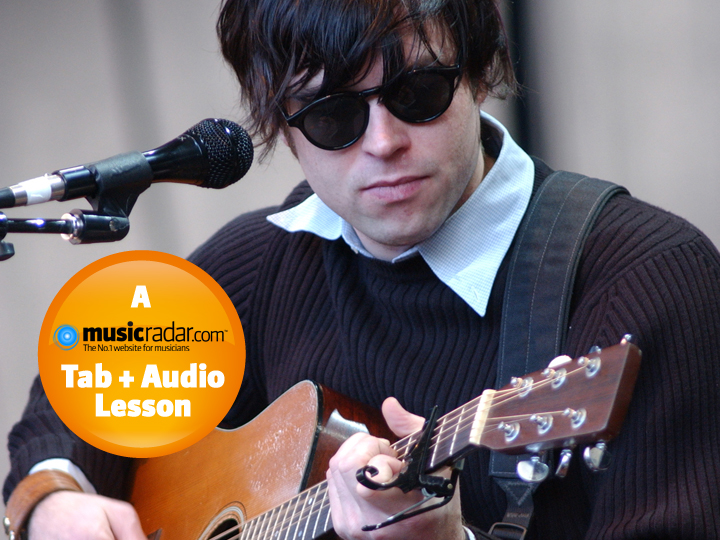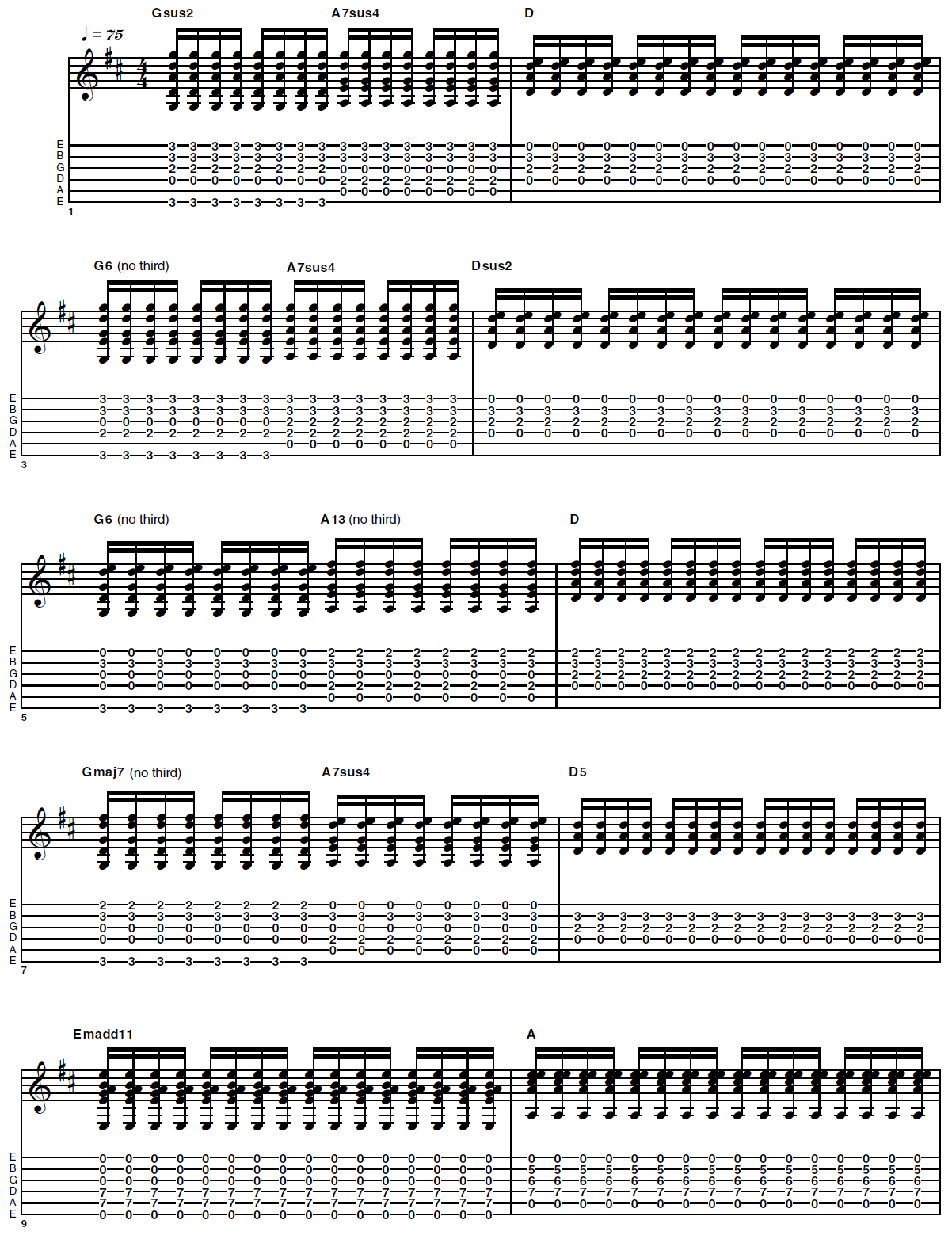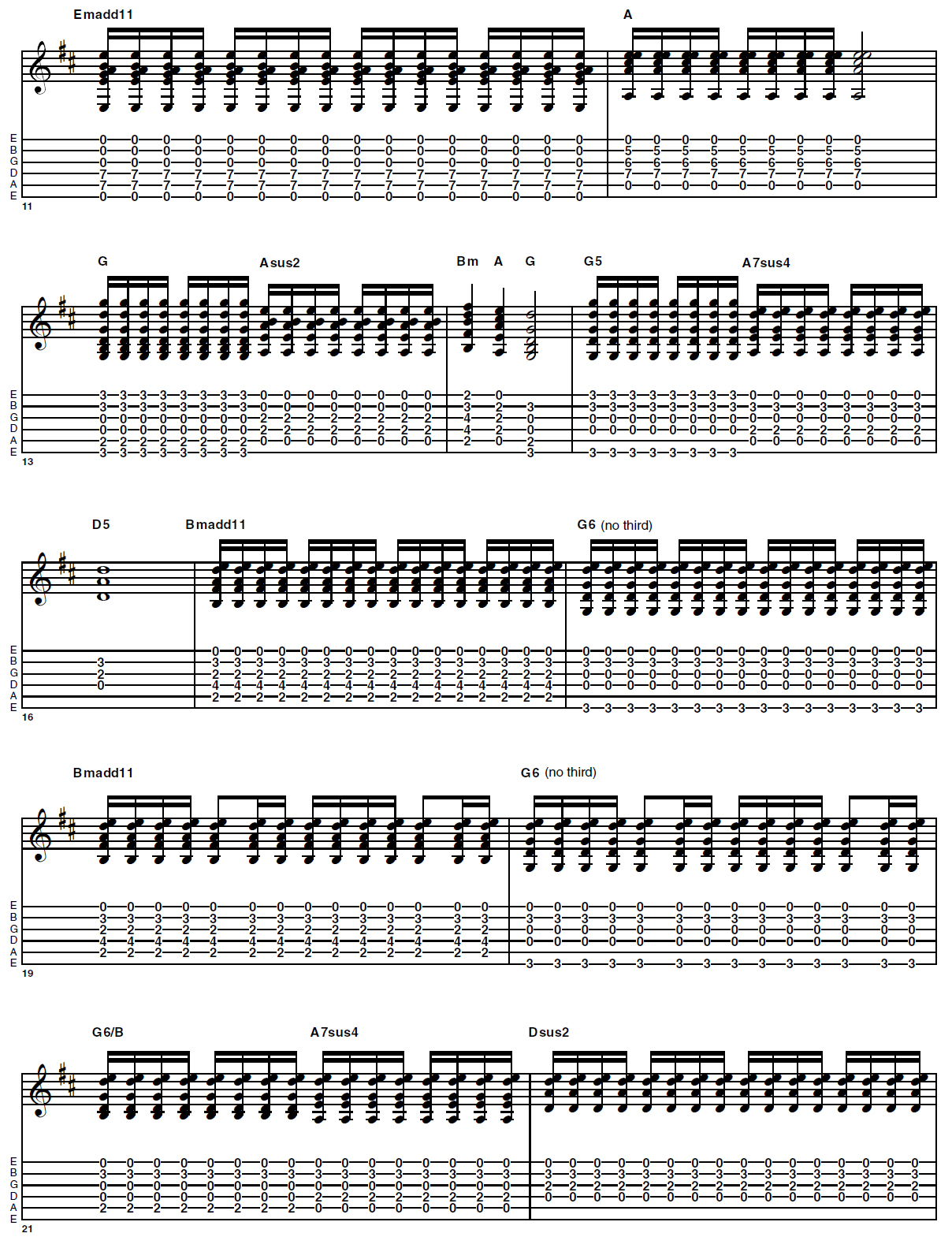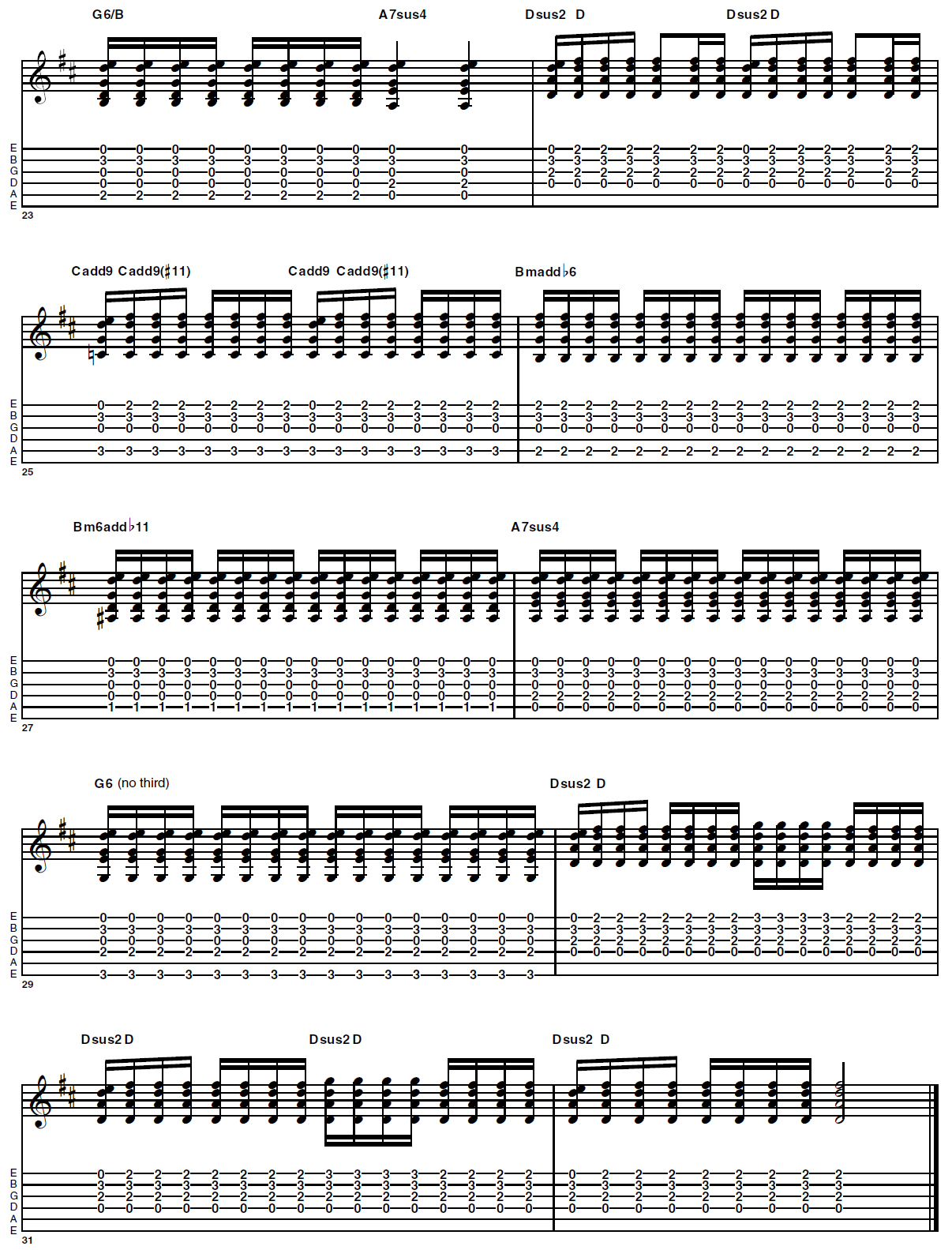How to play acoustic guitar like Ryan Adams

Although he may be best known for his stunning acoustic cover of the classic Oasis song, Wonderwall, Ryan Adams is one of America's best alternative songwriters with a sound that is constantly evolving and increasingly incorporating elements of country music.
As with many songwriters, Adams' guitar style is in service to his vocals and songwriting so you won't find any virtuoso histrionics here. However, there are many well chosen chord voicings and strong rhythm skills to work on.
This particular example affords you the opportunity to work on 16th note strumming rhythms and you will have to be particularly clean on the chord changes to get everything in time.
This kind of playing is quite simple but you'll need to be able to hold down the fundamentals to really nail it. Make sure you don't drop notes or lose the last chord in the bar before the change. Although this has a slowish bpm, you have to maintain a fairly brisk strumming pattern throughout, ensuring that you make the chord changes at the right time. It's a good idea to play this with a metronome as, although you may think you have rock solid timing, the metronome may prove otherwise!
There are a number of interesting chords here as well, so have a good listen to those you like and get them in your arsenal. Remember if you are playing/singing in a different key, the addition of a capo will enable you to transpose all of these open chords easily.
Audio example:
Next page: tab for the audio example
Tab part 1

(Click tab to enlarge)
[Bar 1] Maintain an even 'down up, down up' strumming pattern to get this rhythm up to speed and in time. Watch out for the first G chord, which requires you to mute the 5th string. Try resting your fretting hand's second finger against the string to stop it from resonating.
Get the MusicRadar Newsletter
Want all the hottest music and gear news, reviews, deals, features and more, direct to your inbox? Sign up here.
[Bar 5] Slight variations to the notes in these chords keeps the ideas sounding fresh. This is a device used by all of the great songwriters.
[Bar 9] Open strings can really make for some full sounding chords such as this Em add11 voicing. The subsequent A major triad shows how doubling notes (in this case the open first string and the E on the 5th fret of the second string) can thicken the sound nicely.
Next page: tab part 2
Tab part 2

(Click tab to enlarge)
[Bar 13] Here an A sus2 substitutes for an A major or A7. Ideas like this can soften the sound a little if you prefer that to the more spiky 7ths.
[Bar 17] This Bm11 chord is a little bit tricker to play. You will need to use a partial barre on the third and fifth strings but you will need precise fingering to keep that open first string ringing throughout.
[Bar 19] Here's the same Bm11 chord but with a slightly different rhythm. It's good to be able to play any rhythmic permutation you can think of - this makes learning new ideas easier.
Next page: tab part 3
Tab part 3

(Click tab to enlarge)
[Bar 25] Although there are some odd chord names here they are really straightforward chords with a descending bassline that makes them look complicasted when written down. This is a common device that many songwriters use, to make for some very powerful chord sequences.
[Bar 30] You should play with a good range of dynamics throughout but try these last few bars with a gradually lowering of volume and pace (ritardando).









